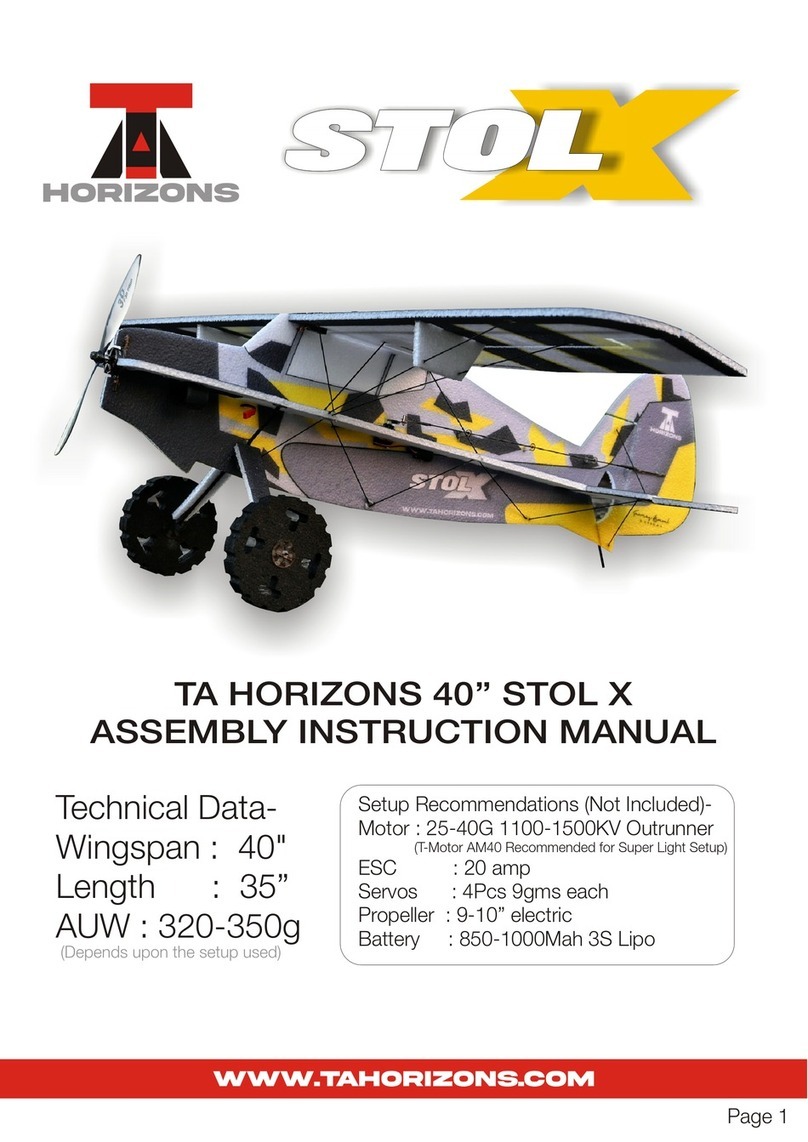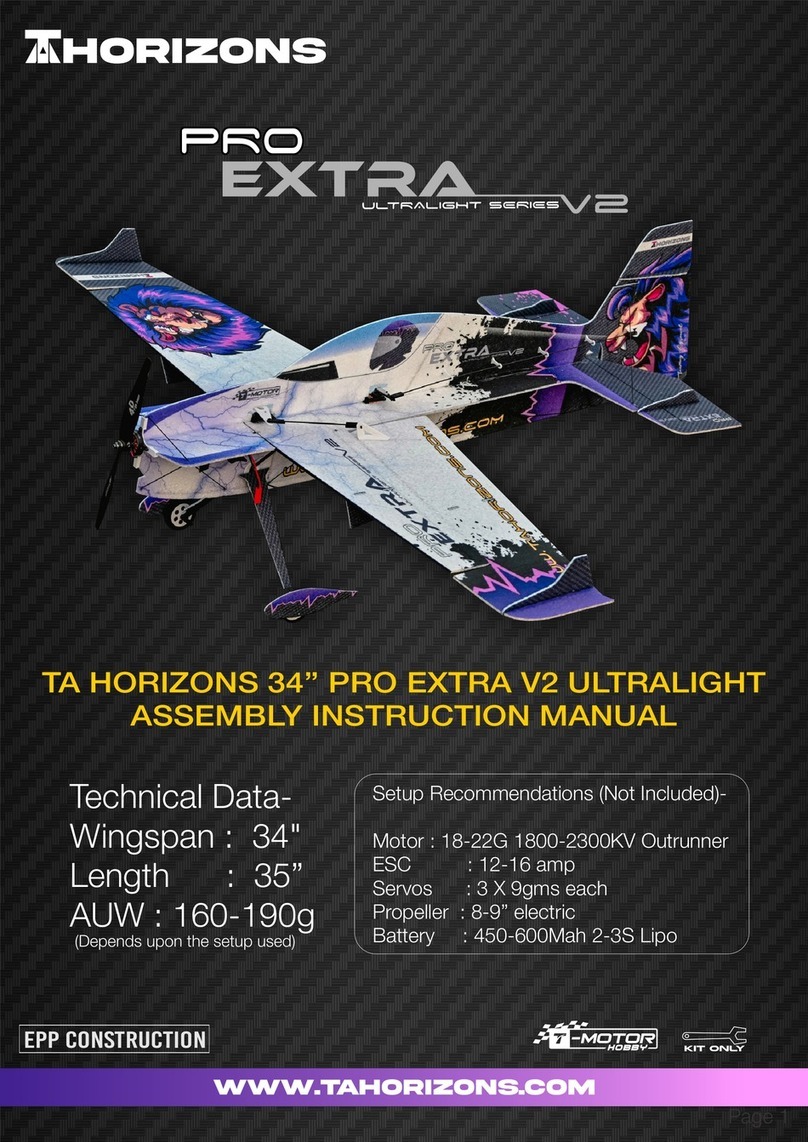
Page 2
WARNING INFORMATION & SAFETY INSTRUCTIONS
Thank you for choosing TA Horizons.
If you have any questions, please contact us aforementioned email address.
Please read the entire manual thoroughly before you begin
to assemble this model.
This R/C airplane is not a toy! Read and understand the entire manual before assembly. If
misused, it can cause serious damages to life and property. Fly only in open areas. If you
are not an experienced pilot and airplane modeler you must take the help of an experienced
pilot or an authorized flight instructor for the building and flying of this model aircraft.
These instructions are suggestions only on how to assemble this model. There are other ways &
methods also to do so. TA Horizons has no control over the final assembly because it specifically
depends upon the knowledge and experience of the person involved directly in its handling,
or the manner in which the model is assembled, radio gear installed, and electronic parts are used
and maintained. Thus, no liability is assumed or accepted for any damages resulting from the use
of the assembled model aircraft. By the act of using this user-assembled product, the user accepts
all the resulting liabilities. In no event shall TA Horizons’ liability exceed the original purchase price of
the kit.
The user is advised to comply with all local laws and regulations. TA Horizons will have no
responsibility over the user assembled product and its end use. TA Horizons has the right to change
any content on the website, product information brochure, or the manuals, at any point of time
without any prior notice.
TA Horizons checks each plane before shipping to ensure that each kit is in fine condition. We
have no bearing on the condition of any component parts damaged by use, modification, or in
assembling of the model. Inspect the components of this kit upon receipt. If you find any parts
damaged or missing, please contact TA Horizons immediately. We will not accept the return or
replacement of parts on which assembly work has already begun.
Our goal is to bring to you the best in quality and state of the art radio controlled aircrafts.
For those who demand the ultimate in precision, or for those who are just a weekend flyers and
want to feel good about their flights, our planes are in development from many months and
tested to ensure that these aircrafts will give you the best possible performance. We sincerely
hope that our products can provide the same thrill to you that we experience in this hobby.





























